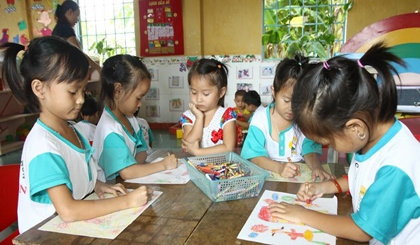Vietnam targets higher pre-school education quality
Vietnam should learn from advanced early childhood education models of foreign countries and apply best practices in order to achieve its set target in developing pre-school education, discussed an international workshop in Hanoi on October 11
 |
| As of April 2017, Vietnam fulfilled the goal of giving all five-year-old children access to pre-school education (Photo: VNA) |
Prof. Dr. Tran Cong Phong, Director of the Vietnam Institute of Education Sciences (VIES), told the workshop, themed “Initiatives to improve quality of early childhood education in Vietnam,” that the institute has joined hands with New Zealand’s Waikato University and the UN Children’s Fund (UNICEF) to hold the event with the aim of discovering new ideas in the field of childhood development.
Delegates at the workshop focused on policies supporting early childhood education and the renovation of contents and methods of child care, education, and assessment.
Assoc. Prof. Dr. Nguyen Ba Minh, head of the Pre-school Education Department under the Ministry of Education and Training, said that universal pre-school education for five-year-old children has been prescribed in the 2009 Education Law, marking a major transformation in Vietnam’s early childhood education over the past 70 years.
The Prime Minister also approved a project on universal pre-school education for five-year-old children during 2010-2015, he said, adding that the implementation of the project over the past six years has greatly impacted on the development of the sector.
As of April this year, the country fulfilled the goal of giving all five-year-old children access to pre-school education.
Minh, however, pointed out a remarkable gap in pre-school education between the regions of Vietnam, as reflected through the shortage of classrooms, material facilities and teachers in disadvantaged localities, including the northern, central and south central mountainous areas, and industrial parks.
(Source: NDO)
 về đầu trang
về đầu trang







